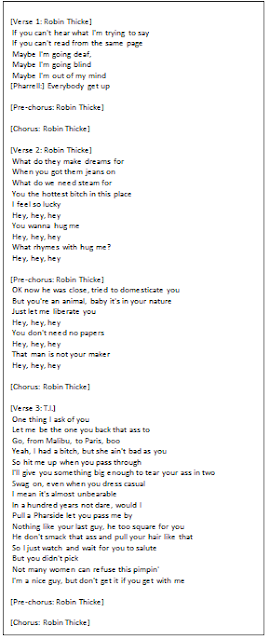Lily Allen has recently released a video for her song "Hard out Here". She has included a lot of intertextuality relating to pop and rap videos included the one most know for objectifying women "Blurred Lines" by Robin Thicke. Her video has had mixed reviews from the media saying that it is not suitable for younger audiences and it's also racist as it features mostly black and Asian women, however Robin Thicke's song has had mostly bad press but had not been banned from either the TV or online sites such as YouTube.
Lily Allen - Hard Out Here




Lyrics
The content seen in "Hard Out Here" is that of which is most commonly seen in rap videos where the rapper is surrounded by scantily clad women and women dancers. There is also a large amount of references to "Blurred Lines" in how all of the women features apart from Lily and dressed and the way in which they act around the main singer.
Robin Thicke - Blurred Lines




Lyrics
"Blurred Lines" features an excessive amount of footage of women dressed in barely any clothes (or in some shots none) and are also being objectified and shown as "toys" for the men can unwrap and to do what they want with. This video has received a large amount of criticism from the media from newspaper articles to online forums exaggerating this point and trying to get the video taken down.















































